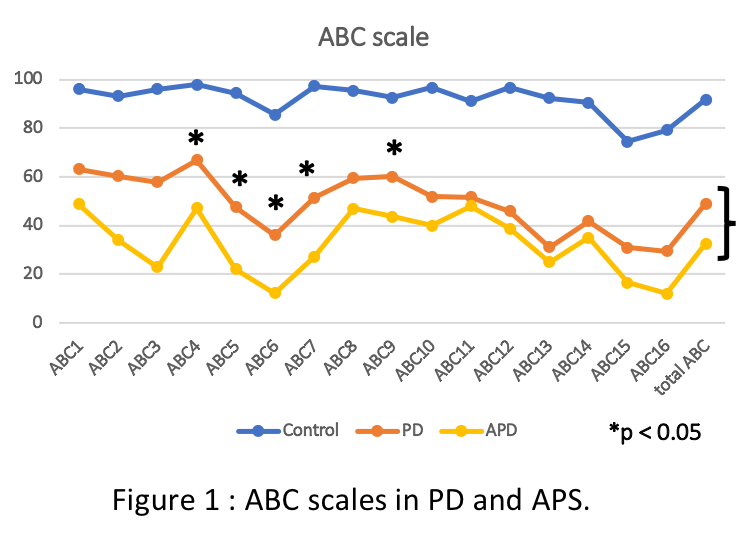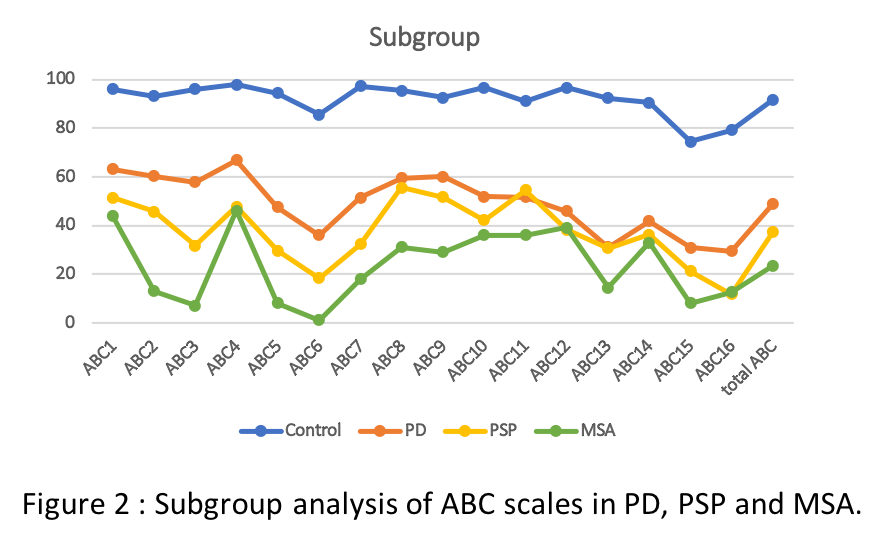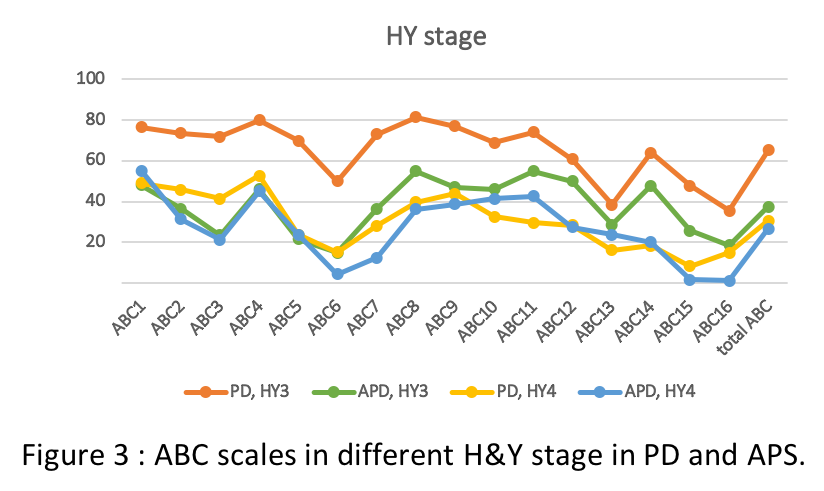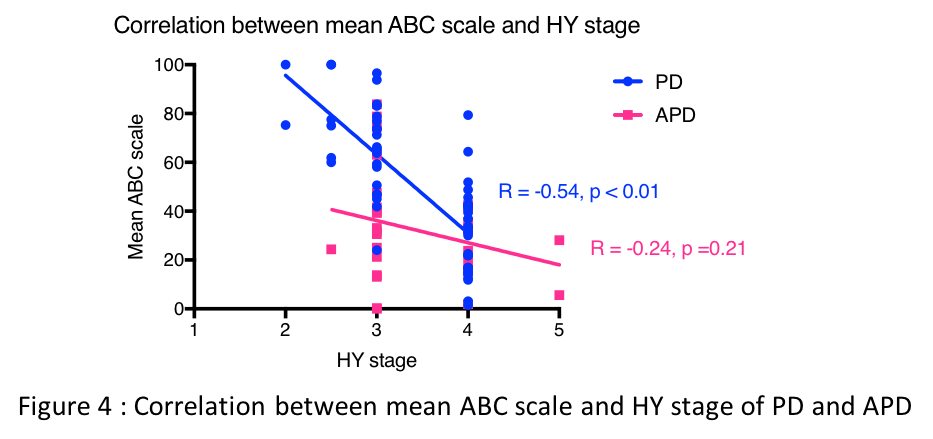Session Information
Date: Sunday, October 7, 2018
Session Title: Parkinsonism, MSA, PSP (Secondary and Parkinsonism-Plus)
Session Time: 1:45pm-3:15pm
Location: Hall 3FG
Objective: To determine balance confidence (FoF) in patients with PD and APS by utilizing the 16-items Activities-Specific Balance Confidence Scale (ABC-16), and identify specific activities from this scale that are predictors of future falls.
Background: Recent studies have identified the movements in vertical orientation are high-risk activities associated with falling in patients with Parkinson’s disease (PD). However, no information is available in patients with atypical parkinsonian syndromes (APS).
Methods: 28 APS patients APS (PSP:18;, MSA: 10), 61 age- and HY-matched PD patients, and 52 age-matched healthy controls completed the Thai-validated version of ABC scale. The number of falls during the past month was obtained from all subjects.
Results: In comparison to PD patients, APS patients had significant shorter disease duration (p = < 0.01) but higher number of falls (p = < 0.01). APS patients reported significant lower balance confidence in the item 2-7 &9 (up and down stairs, pick up slipper from floor, reach at eye level, reach on tiptoes, stand on chair to reach, sweep on the floor and get in/out of car) compared to PD and control subjects (p = < 0.01)., with the lowest confidence score in item 6 (standing on chair to reach). [figure1] The lowest ABC scores were observed in MSA patients in all 16 activities. [figure2] While balance confidence was significantly lower in APS than PD patients, this observation was not demonstrated when the disability reached HY stage 4 in both groups. [figure3] There was significant negative correlation between mean ABC scales and HY stage in PD (r= -0.54, p<0.01) but not in APS (r=- 0.24, p=0.21). [figure4]
Conclusions: In this study, APS patients are found to have lower balance confidence than PD patients, but patients in both groups share similar high-risk activities, associated with movements in the vertical orientation. The lowest confidence was observed in MSA patients, possibly related to additional cerebellar dysfunction. Interestingly, disease severity was found to be a contributing factor to FoF in PD, but not APS patients in our study.
To cite this abstract in AMA style:
P. Panyakaew, N. Kantachadvanich, S. Chaiwong, R. Bhidayasiri. What activities increase the risk of falling in atypical parkinsonian syndromes? A comparative study with Parkinson’s disease [abstract]. Mov Disord. 2018; 33 (suppl 2). https://www.mdsabstracts.org/abstract/what-activities-increase-the-risk-of-falling-in-atypical-parkinsonian-syndromes-a-comparative-study-with-parkinsons-disease/. Accessed December 23, 2025.« Back to 2018 International Congress
MDS Abstracts - https://www.mdsabstracts.org/abstract/what-activities-increase-the-risk-of-falling-in-atypical-parkinsonian-syndromes-a-comparative-study-with-parkinsons-disease/




